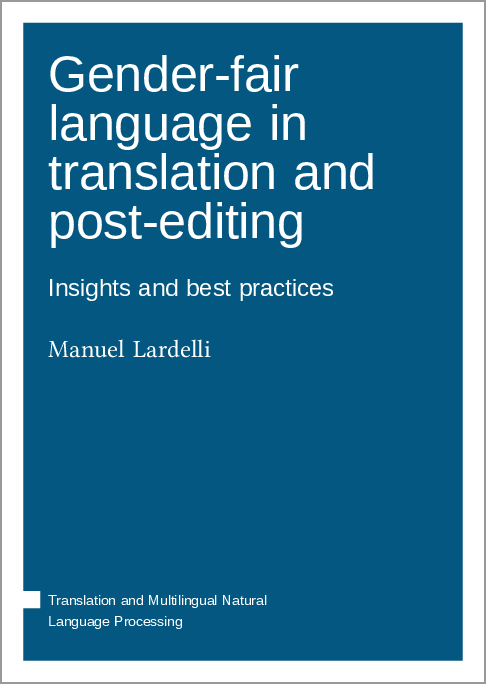We log anonymous usage statistics. Please read the privacy information for details.
Forthcoming: Gender-fair language in translation and post-editing: Insights and best practices
Synopsis
Machine Translation (MT) models knowingly suffer from gender bias, especially for genders beyond the binary. Since issues of non-binary representation and language use are still often neglected in both Translation Studies (TS) and MT, this book investigates the translation and post-editing of gender-fair language beyond the binary in a process and product-oriented study. Twelve language professionals were recruited and asked to either translate or post-edit three brief English texts into German. In each text, they had to use a different gender-fair language approach, i.e. (i) gender-neutral rewording, (ii) gender-inclusive characters, and (iii) neosystems.
Data on the translation and post-editing process were collected by combining non-participant observation, screen recordings, and interviews. The produced target texts were annotated to elicit product data. The focus of the study was not on translation quality but rather on the ease and success of integrating gender-fair language into the translation and post-editing process. Findings show that post-editing is generally faster than translation, and that the use of neosystems increases screen activity as well as perceived cognitive effort, which in turn reduces success in using gender-fair language. Finally, participants indicated a clear preference for a combination of gender-neutral and gender-inclusive strategies.



